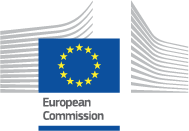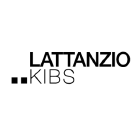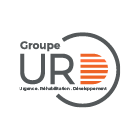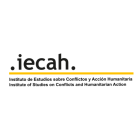WORKING WITH DG ECHO AS AN INTERNATIONAL ORGANISATION | 2021 - 2027
8. RESILIENCE MARKER
2. Project Data Overview By Country
3. Humanitarian Organisations In The Area
4. Needs Assessment And Risk Analysis
12. Visibility, Communication And Information Activities
13. Financial Overview Of The Action
14. Requests For Alternative Arrangements
15. Administrative Information
Resilience is the ability of an individual, a household, a community, a country or a region to resist, adapt, and quickly recover from a disaster or crisis such as drought, violence, conflict or natural disaster. The resilience marker seeks to enhance the quality of humanitarian actions by:
- Ensuring a systematic consideration and inclusion of resilience considerations in project proposals, implementation and assessment;
- Creating a platform for partners and DG ECHO staff to discuss how resilience can best be included in humanitarian programming;
- Encouraging reflection on what resilience means in practice in different contexts; and
- Allowing DG ECHO to monitor its own performance in supporting resilience.
The mark will not influence to decision to fund or not an Action. However, the marker criteria reflect important quality indicators.
8.1 RESILIENCE
The partner will assess its action by answering the 4 quality criteria and selecting the relevant answer: Yes, or not sufficiently
Q1: Do the proposed project activities adequately reflect an analysis of risks and vulnerabilities (including conflict, environment and climate risks)?
The project is risk-informed, as based on analysis of relevant hazards and stresses and its activities can address these hazards and stresses. Prior to the design of the project, an analysis of all relevant risks to which the targeted beneficiaries/geographical area are and could be potentially exposed to must be undertaken.
These risks should cover: natural hazards (hydro-meteorological and geological), climate change impacts/risks, diseases and epidemics, violence and conflict (outbreak, intensification or potentiality), environmental degradation, industrial threats. The analysis should also cover the vulnerabilities of the beneficiaries (socio-economic, gender, cultural, religious, ethnic, etc.) and identify their structural causes.
This question corresponds to Section 4.2 of the Single Form on the risk and vulnerability analysis. Explain the answer provided in the box “Provide details”.
The answer provided should complement that of Section 4.2. of the Single Form.
Q2: Does the project adopt a "do no harm and conflict sensitivity" approach, include specific measures to ensure that the identified risks and any environmental impacts of the project are addressed to the extent possible, and are not aggravated by the action?
The project puts in place measures to mitigate any negative effects of its own activities so that they do not contribute to climate change (e.g. limiting carbon emissions), or environmental degradation (by adopting environmentally sustainable practices in the delivery of humanitarian assistance) or conflict, and do not intensify existing vulnerabilities or create new ones.
If no environmental considerations were taken into account, the answer given to this question both by the partner and DG ECHO should be ‘NO’, even if the other dimensions of this question are fulfilled. It is important to note that if the answer is ‘YES’ the details of how environmental considerations were integrated in the projects need to be described in sections 4.2, 4.3, 7.3 and 9.2.
Also, the project applies measures to protect its activities from the identified risks. In doing so, the project should have a forward-looking approach by taking into account future climate and environmental-related risks.
Q3: Does the project include measures to strengthen local preparedness capacities (of individuals and national or local institutions or organisations) to respond or adapt to identified risks?
The project activities reinforce the capacities of local actors (individuals, government, civil society organisations, private sector, etc) to plan and implement preparedness and response measures so that they are able to cope with identified and potential risks (see Question 1 of the Resilience Marker).
Explain the answer provided in the box “Provide details”.
Q4: Does the project contribute to long-term strategies to reduce humanitarian needs, underlying vulnerability and risks or identifies modalities to link up with ongoing development interventions (national or international stakeholders)?
The project links and contributes to ongoing or future development initiatives (from the government at different levels, or other national/local stakeholders or the international community) whether in the same field of intervention or in a different one (e.g. environmental protection or sustainable energy). Also, the project activities can or will be taken over or scaled up by development actors.
Explain the answer provided in the box “Provide details”.
Based on the answers, each Action will be marked with a score (0-2). The mark will be attributed automatically using the scale aside:
Information on improvements and setbacks in efforts to integrate resilience will also be reported.
REFERENCE & DOCUMENT
Resilience Marker Guidelines





